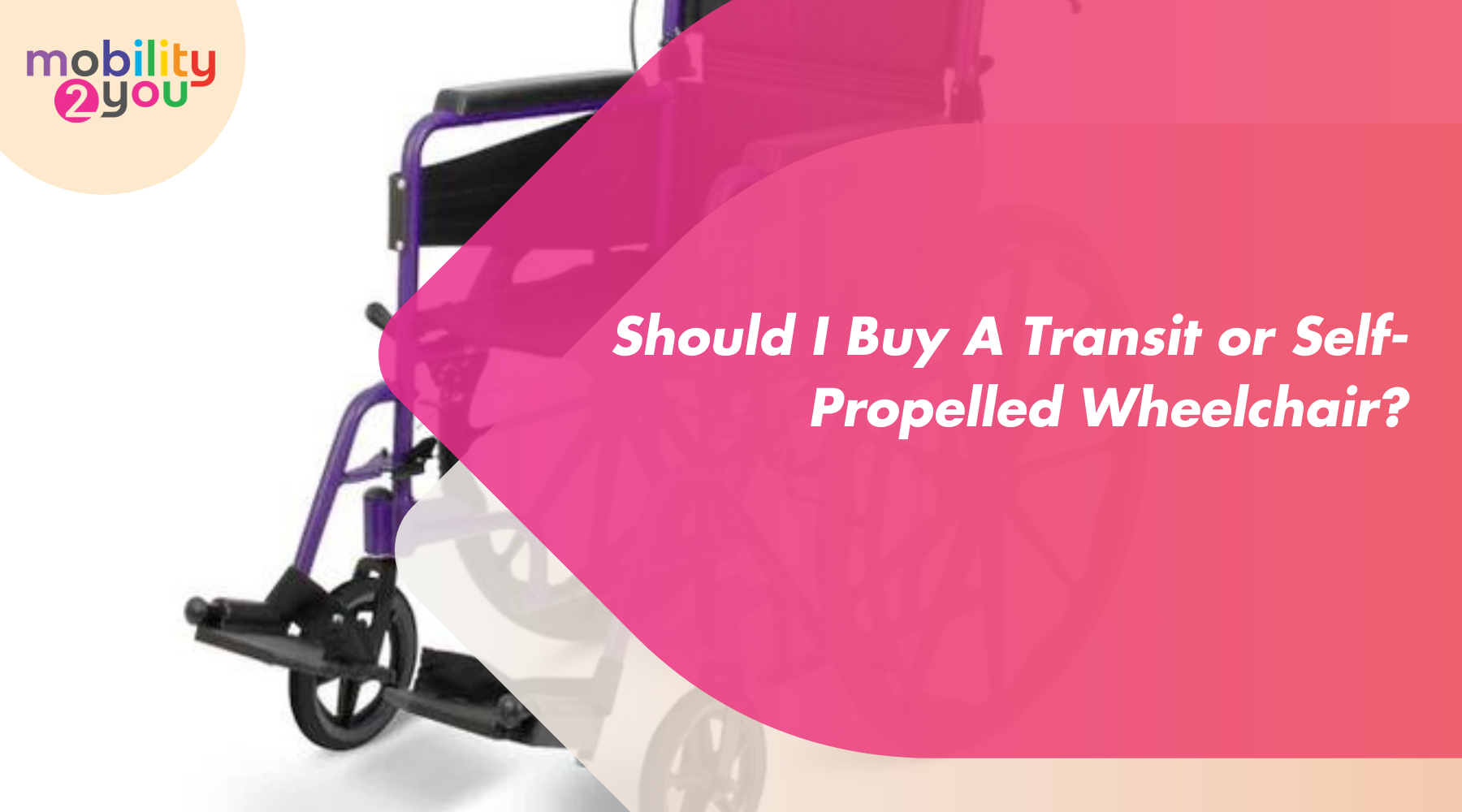Introduction:
Choosing the right wheelchair can significantly impact one's mobility and independence. Among the myriad of options available, transit and self-propelled wheelchairs stand out as popular choices. Each type caters to different needs and preferences, making the decision-making process crucial. In this article, we'll explore the key differences between transit and self-propelled wheelchairs, helping you make an informed decision.
Understanding Transit Wheelchairs:
Transit wheelchairs, also known as transport chairs, are designed to be propelled by a caregiver or assistant. These chairs typically feature smaller rear wheels, making them lightweight and easy to maneuver. They are ideal for individuals who require assistance with mobility 2 You and may not have the strength or ability to propel themselves.
Advantages of Transit Wheelchairs:
-
Ease of Use: Transit wheelchairs are effortless to operate, requiring minimal effort from the user.
-
Compact Design: Their compact design makes them easy to transport and navigate through narrow spaces, such as corridors or tight doorways.
-
Ideal for Travel: Due to their lightweight construction, transit wheelchairs are perfect for travel purposes, whether it's a trip to the doctor's office or a vacation getaway.
-
Comfort: Many transit wheelchairs are designed with comfort in mind, featuring padded seats and armrests for added support during transit.
Understanding Self-Propelled Wheelchairs:
Self-propelled wheelchairs, on the other hand, are designed for individuals who have the strength and ability to propel themselves. These wheelchairs feature larger rear wheels, allowing users to maneuver independently without assistance.
Advantages of Self-Propelled Wheelchairs:
-
Independence: Self-propelled wheelchairs offer users a greater sense of independence and autonomy, allowing them to navigate their surroundings without relying on assistance.
-
Customization: These wheelchairs often come with adjustable features, such as seat height and backrest angle, allowing users to customize their wheelchair for optimal comfort and functionality.
-
Exercise: Propelling a wheelchair can provide a valuable form of exercise for individuals with mobility limitations, helping to improve strength and cardiovascular health.
-
Versatility: Self-propelled wheelchairs are suitable for a variety of environments, including both indoor and outdoor settings, thanks to their larger wheels and sturdy construction.
Choosing the Right Wheelchair for You:
When deciding between a transit and self-propelled wheelchair, several factors should be taken into consideration, including:
-
Mobility Needs: Assess your level of mobility and whether you require assistance with propulsion. If you have limited strength or mobility, a transit wheelchair may be the better option. However, if you prefer independence and have the ability to self-propel, a self-propelled wheelchair may be more suitable.
-
Lifestyle: Consider your daily activities and lifestyle preferences. If you lead an active lifestyle and enjoy exploring the outdoors, a self-propelled wheelchair may offer greater versatility and freedom. On the other hand, if you primarily need a wheelchair for occasional outings or transportation purposes, a transit wheelchair may suffice.
-
Comfort and Accessibility: Take into account factors such as seat comfort, cushioning, and accessibility features when choosing a wheelchair. Ensure that the wheelchair provides adequate support and comfort for extended periods of use.
-
Budget: Finally, consider your budgetary constraints and the cost of the wheelchair. Transit wheelchairs tend to be more affordable than self-propelled models, but prices can vary depending on features and specifications.
Conclusion:
In conclusion, the decision to buy a transit or
self-propelled wheelchair ultimately depends on your individual needs, preferences, and lifestyle. Whether you prioritize ease of use, independence, or versatility, there is a wheelchair option that caters to your specific requirements. By carefully considering the factors outlined in this article, you can make an informed decision and select the wheelchair that best suits your mobility needs.
